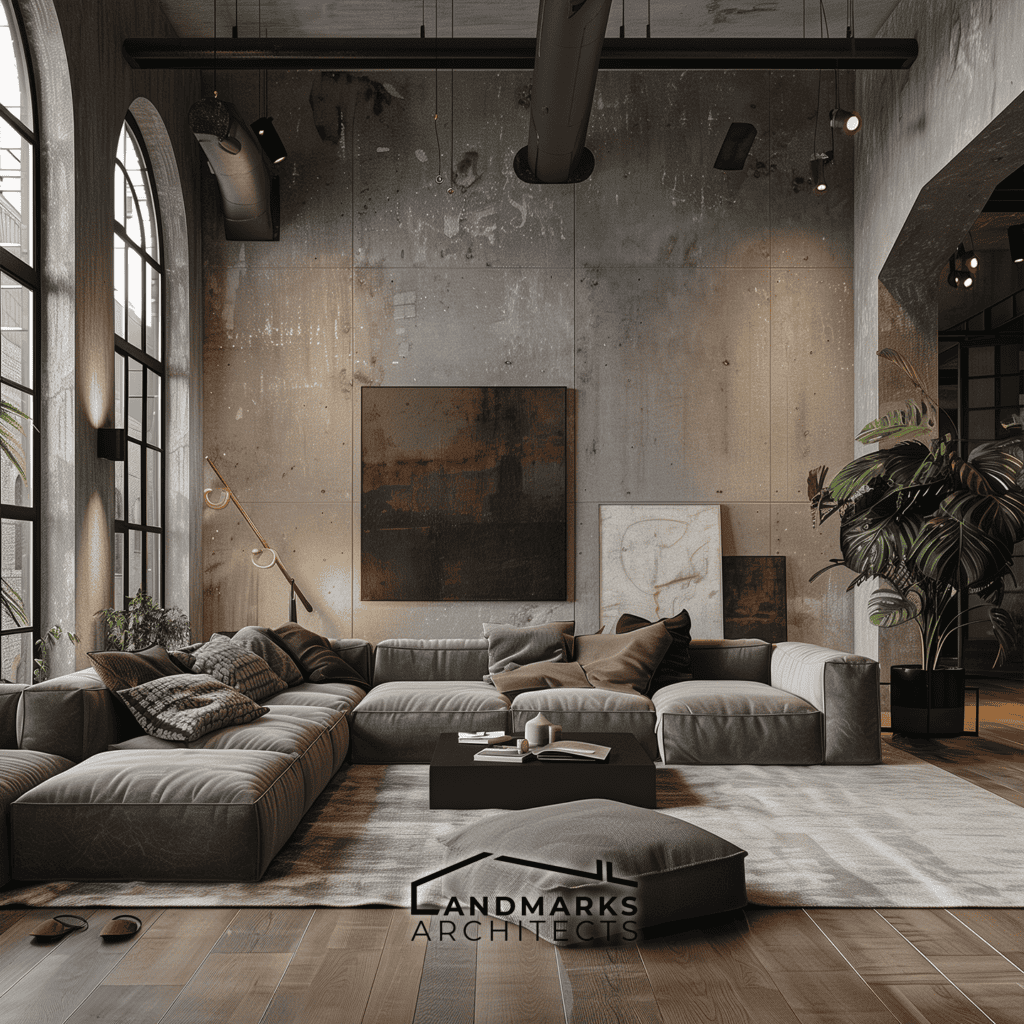
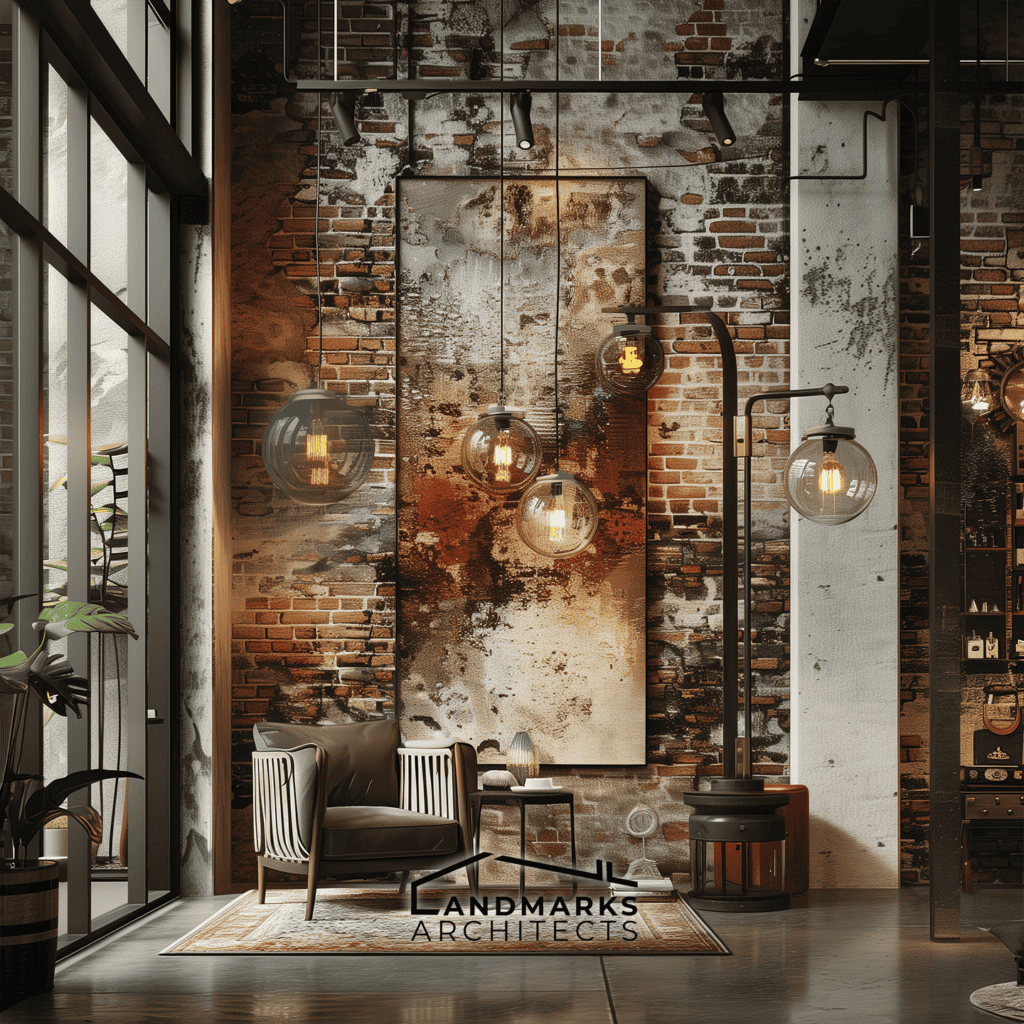
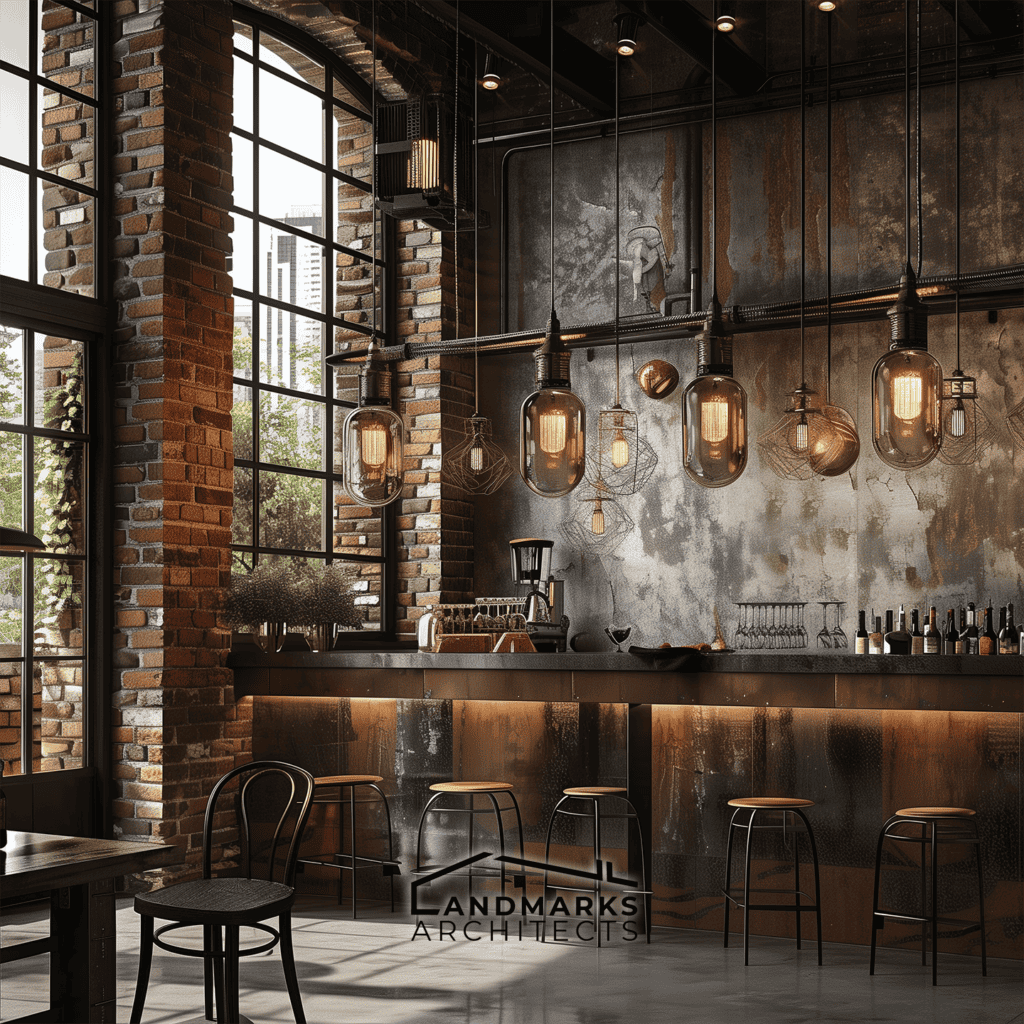
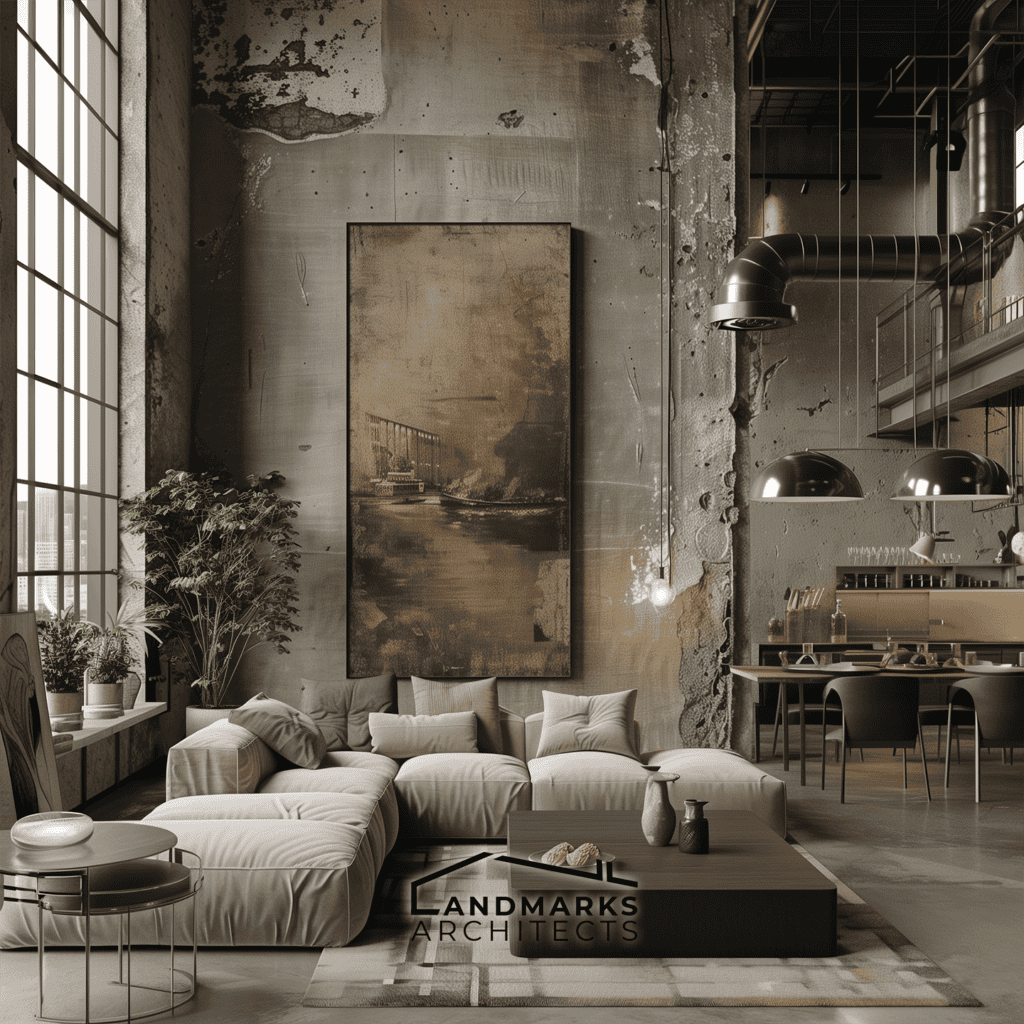
Are you drawn to the raw elegance of industrial interior design?
At Landmarks Architects, we love industrial architecture. We will guide you through its design and fix its common issues.
In this article, we will cover:
- The defining characteristics of industrial interior architecture
- Practical tips for integrating industrial elements into your home
- Solutions for Blending Aesthetics
- Addressing the Challenges of Industrial Design
Ready to transform your space into a stunning example of industrial design?
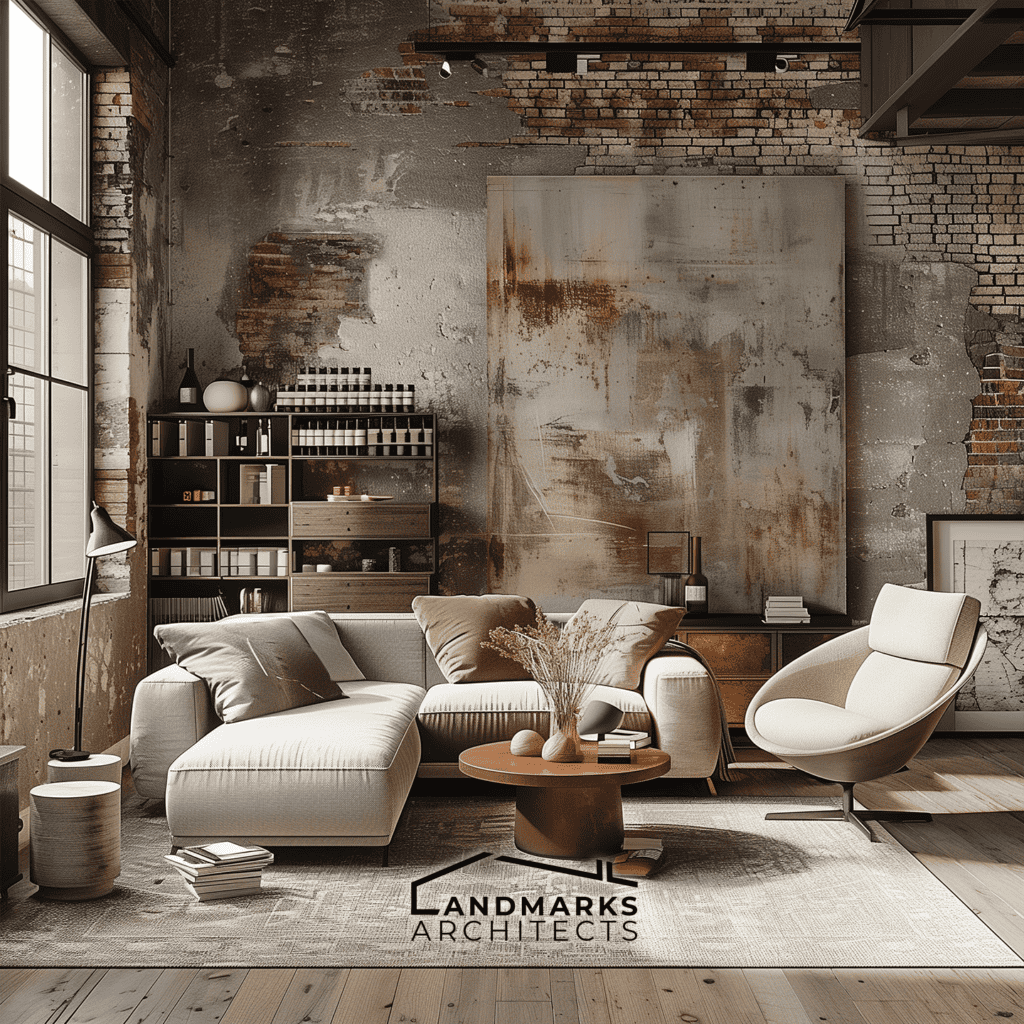
See also: Wabi-Sabi Interior Design: 9 Essentials of Beauty & Simplicity
How Industrial Design Transformed Spaces?
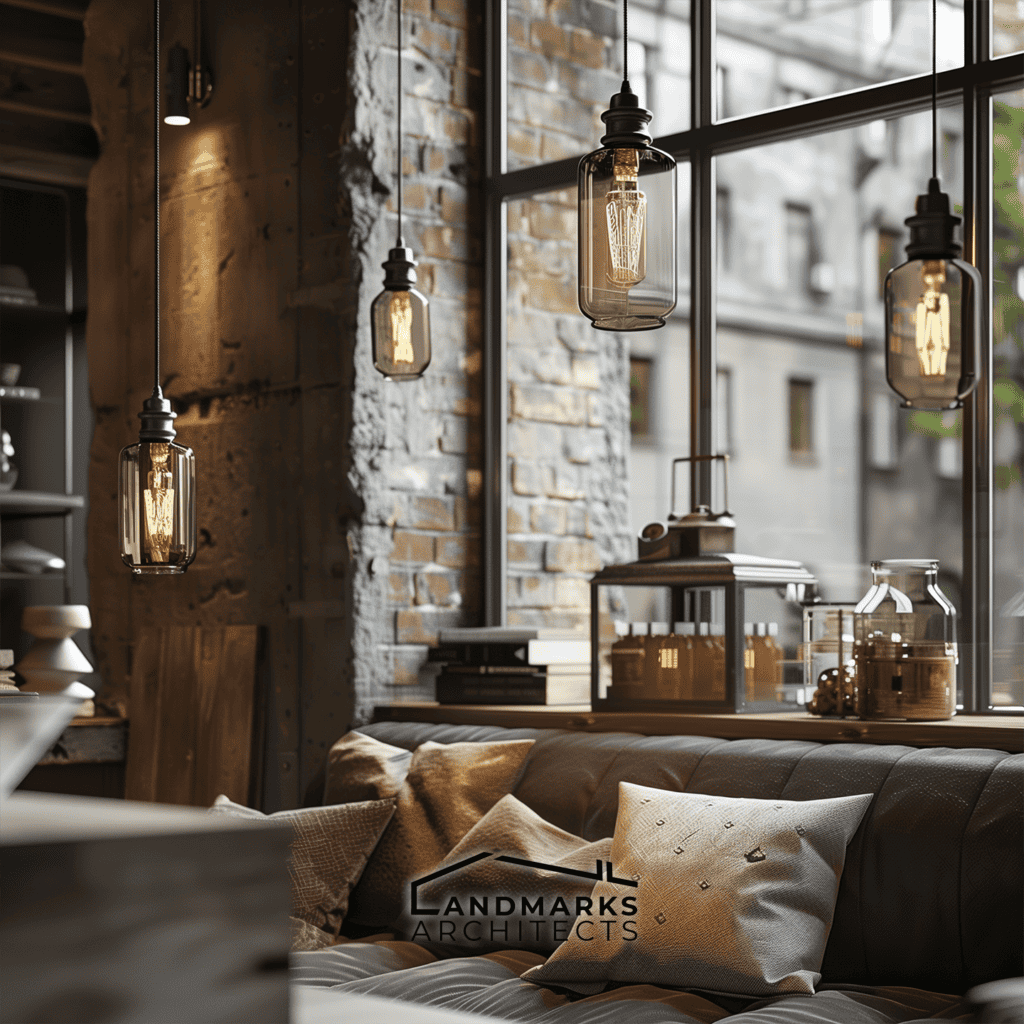
Industrial interior design began in the 19th century, during the Industrial Revolution. This period marked a shift. Adaptive reuse projects used vacant industrial buildings. Designers repurposed brick walls, exposed beams, and metal accents. They created unique living spaces.
By the early 2000s, the trend gained mainstream appeal, especially in urban areas. The trend of turning old factories into urban lofts popularized the industrial style. It showcased a mix of old and new.
Key Features of Industrial Interior Design
1. Raw and Unfinished Materials

Raw and unfinished materials define the essence of industrial interior design. They celebrate authenticity by showcasing their natural imperfections.
Key Materials:
- Exposed Brick Walls: They add warmth and texture. They highlight a space’s historic character.
- Concrete Floors: They are durable and have a minimalist look. So, they are ideal for high-traffic areas.
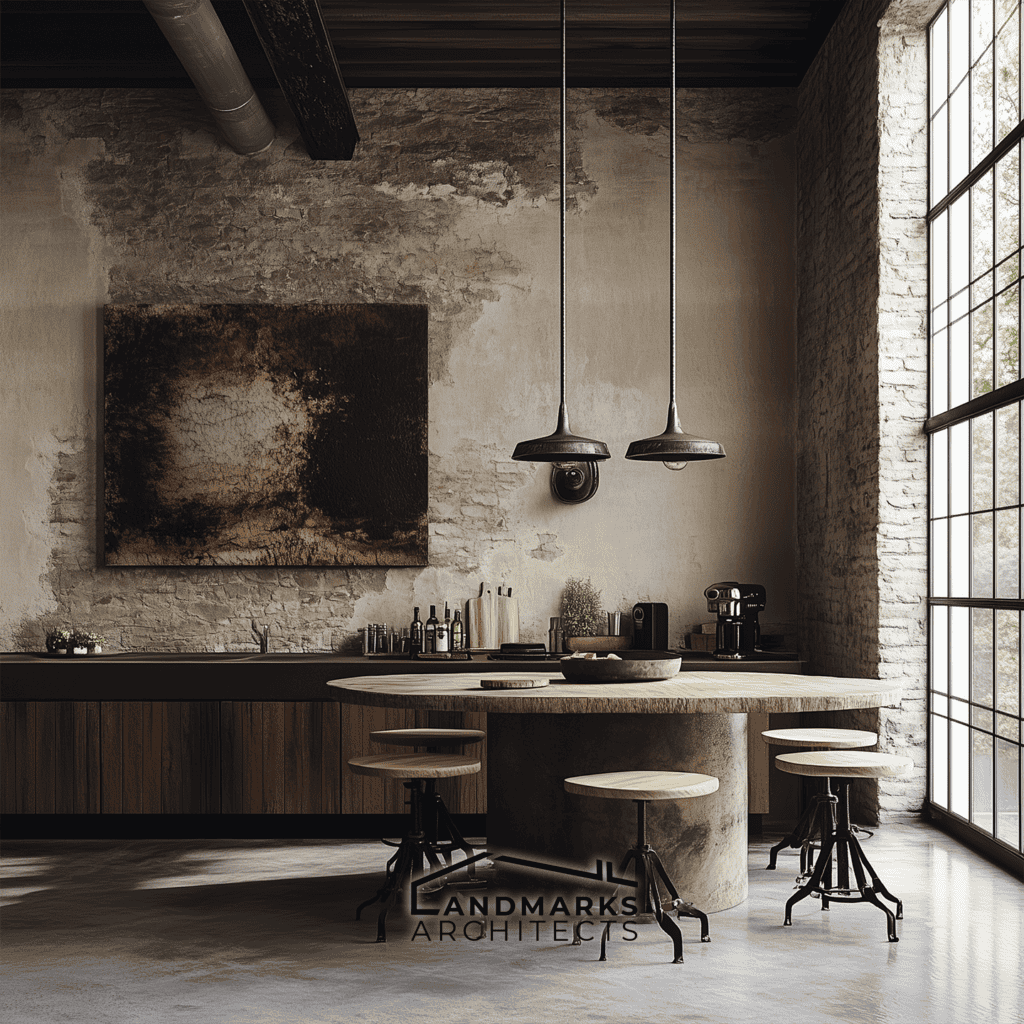
- Reclaimed Wood: It’s often from old factories or barns. It has rustic charm and is sustainable.
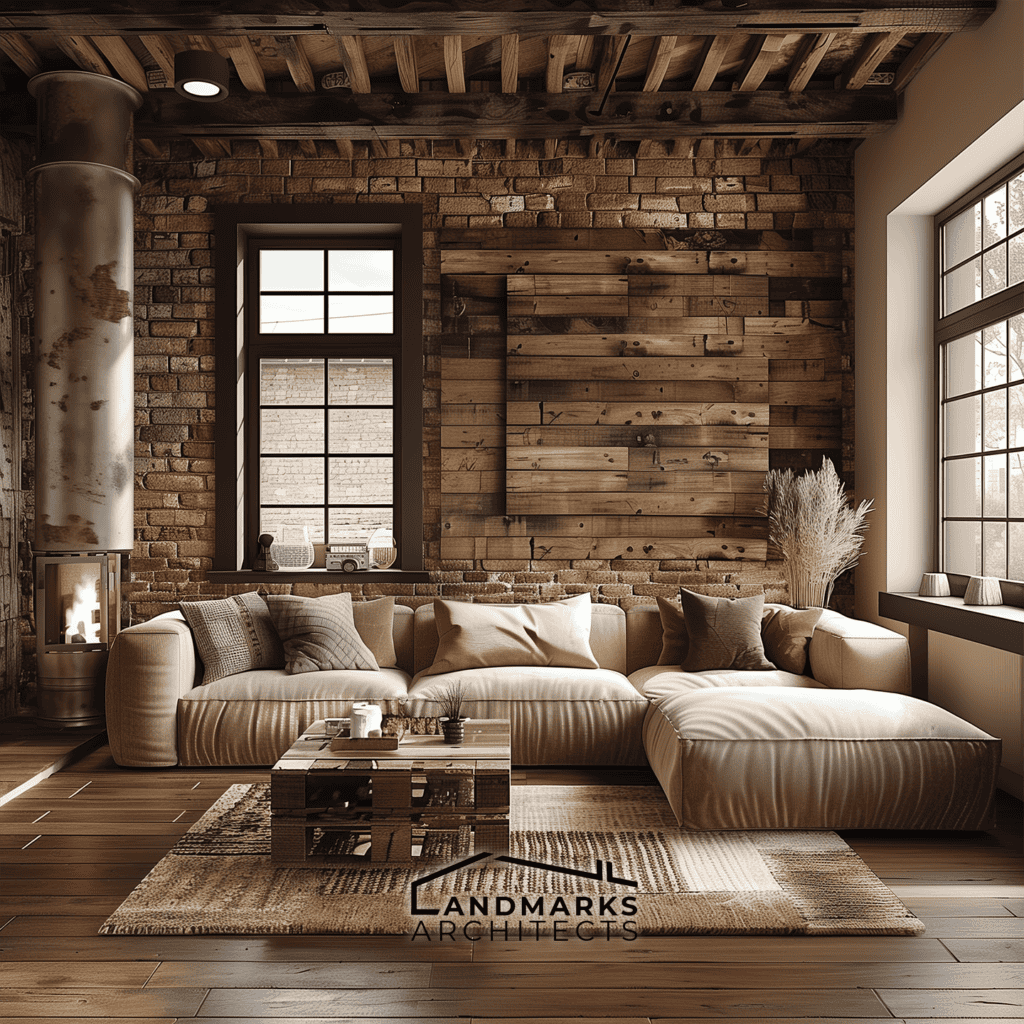
- Exposed Structural Elements: Beams and pipes show the building’s frame. They also boost the industrial vibe.
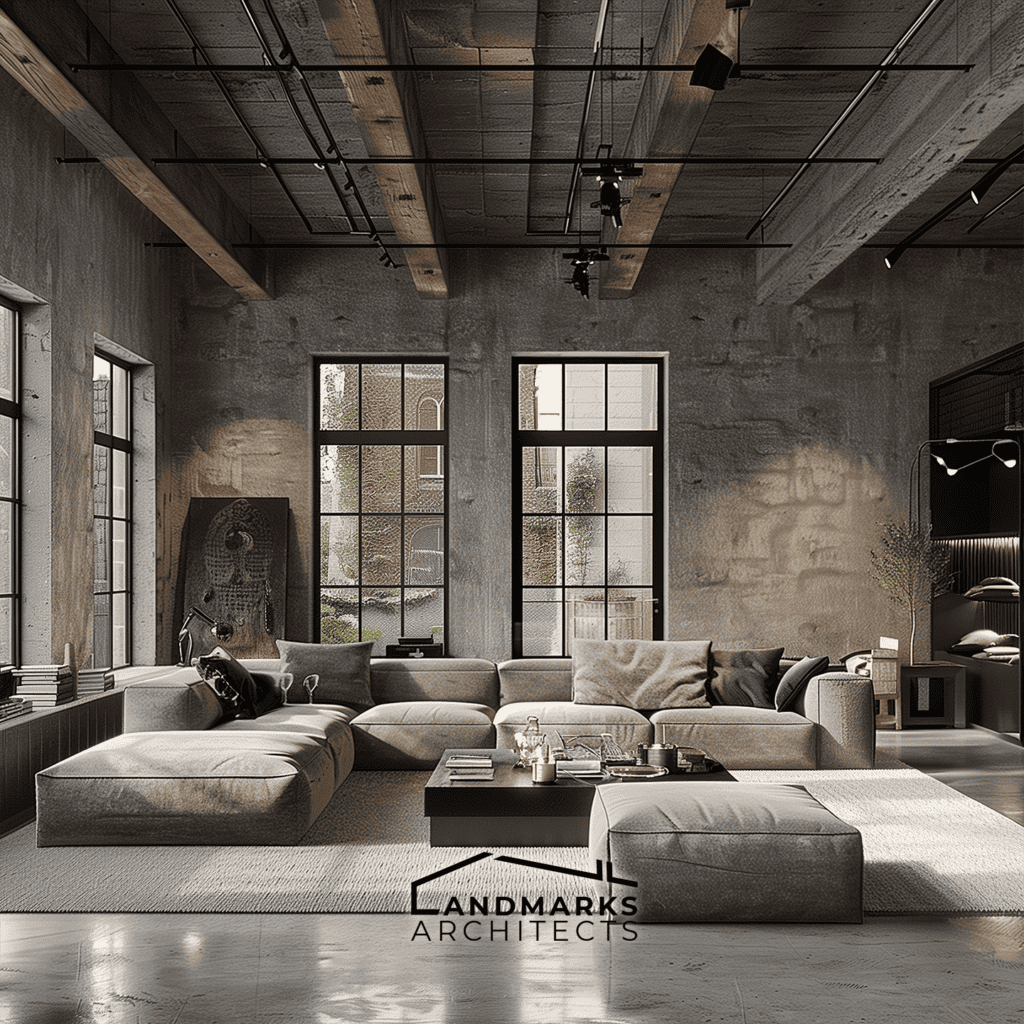
2. Textural Contrast
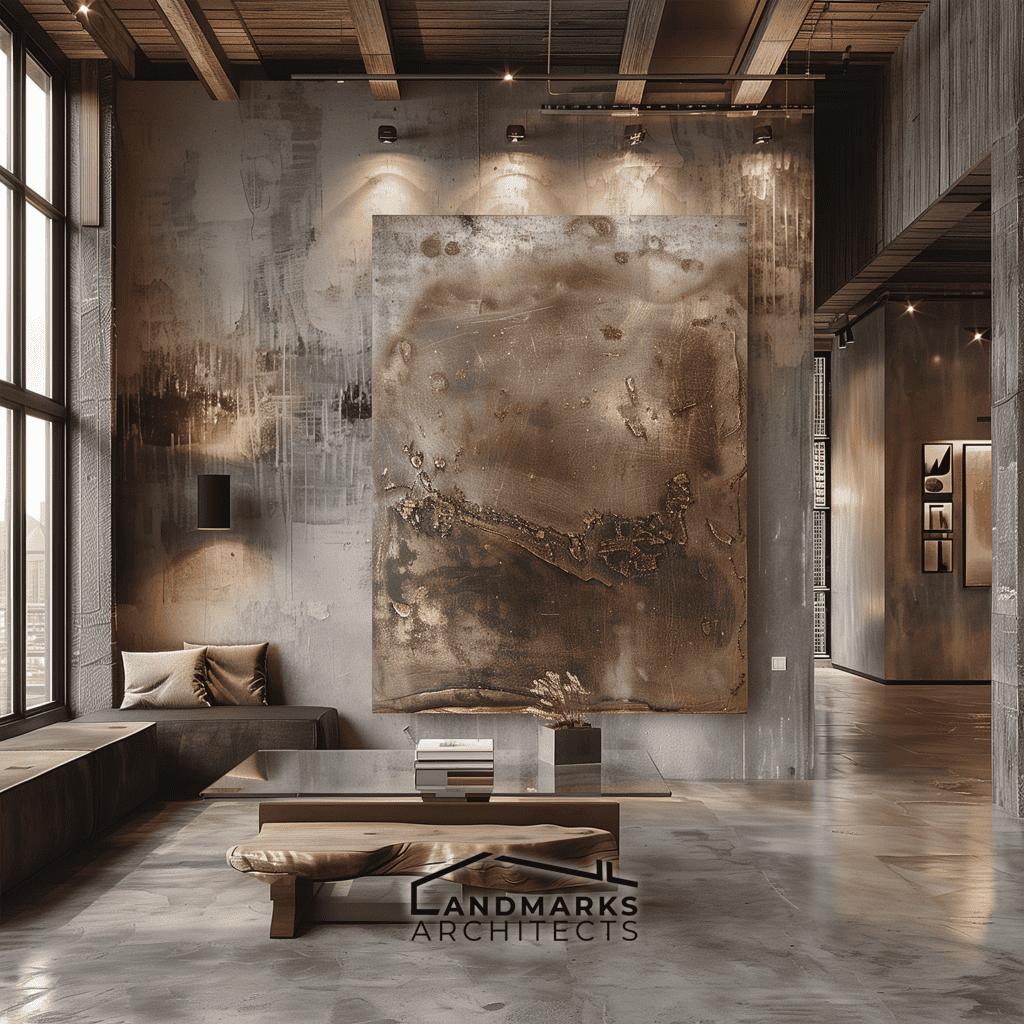
Textural contrast is vital in industrial interior design. It adds depth and interest to spaces. This design approach combines smooth textures, like metal and glass, with rough ones, like wood and concrete. The juxtaposition of these materials creates a dynamic aesthetic.
Key elements to consider include:
- Metal fixtures: They can add a contemporary touch.
- Rough wood: Offers warmth and rustic charm.
- Smooth glass: Provides elegance and lightness.
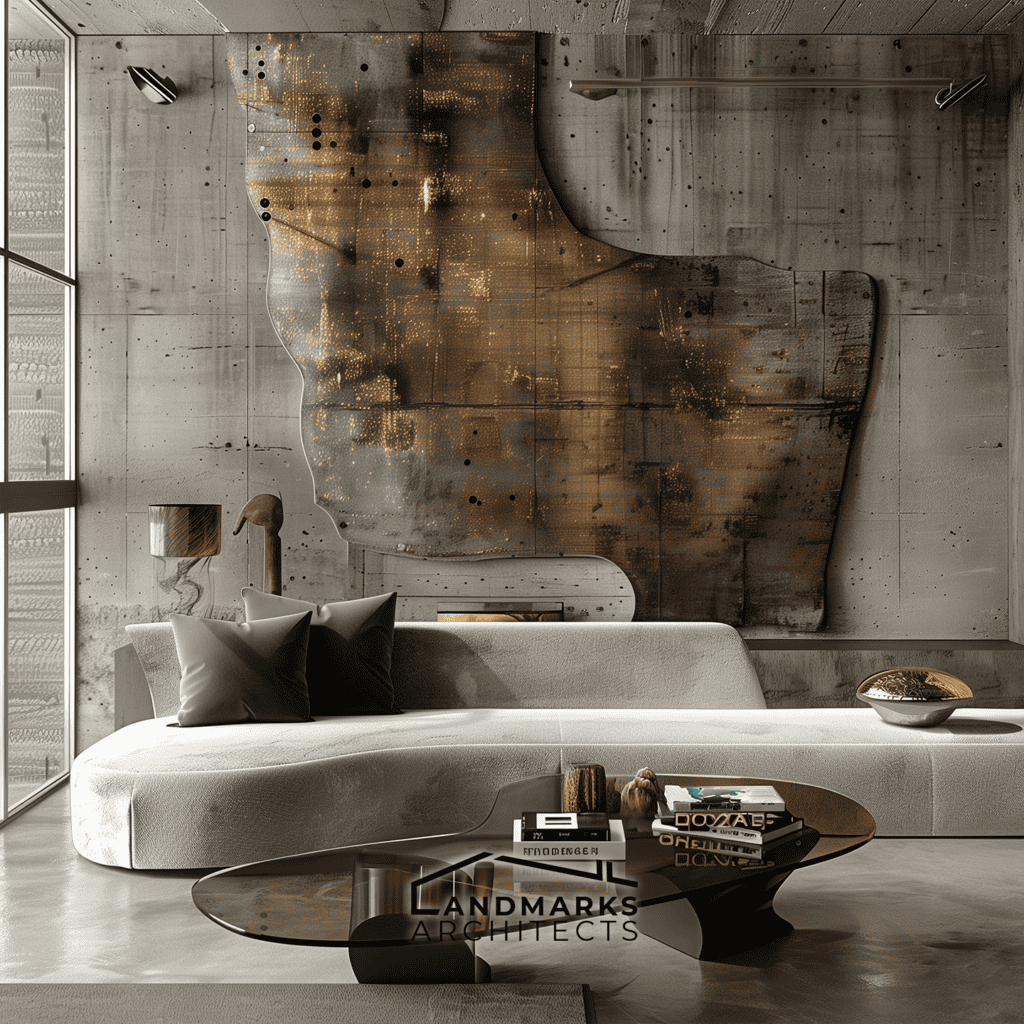
3. Neutral and Monochromatic Color Schemes

Neutral and monochromatic color schemes are fundamental to achieving the industrial aesthetic. They use earthy tones, grays, and blacks for a sleek, unified look.
Key characteristics of neutral and monochromatic color schemes include:
- Subdued tones: Soft greys and beiges gently complement stronger architectural elements.
- Metallic accents: Use finishes like brushed nickel or matte black. They add a modern touch without overwhelming the space.
- Contrast: Using varying shades within a monochromatic scheme can define areas and enhance spatial perception.
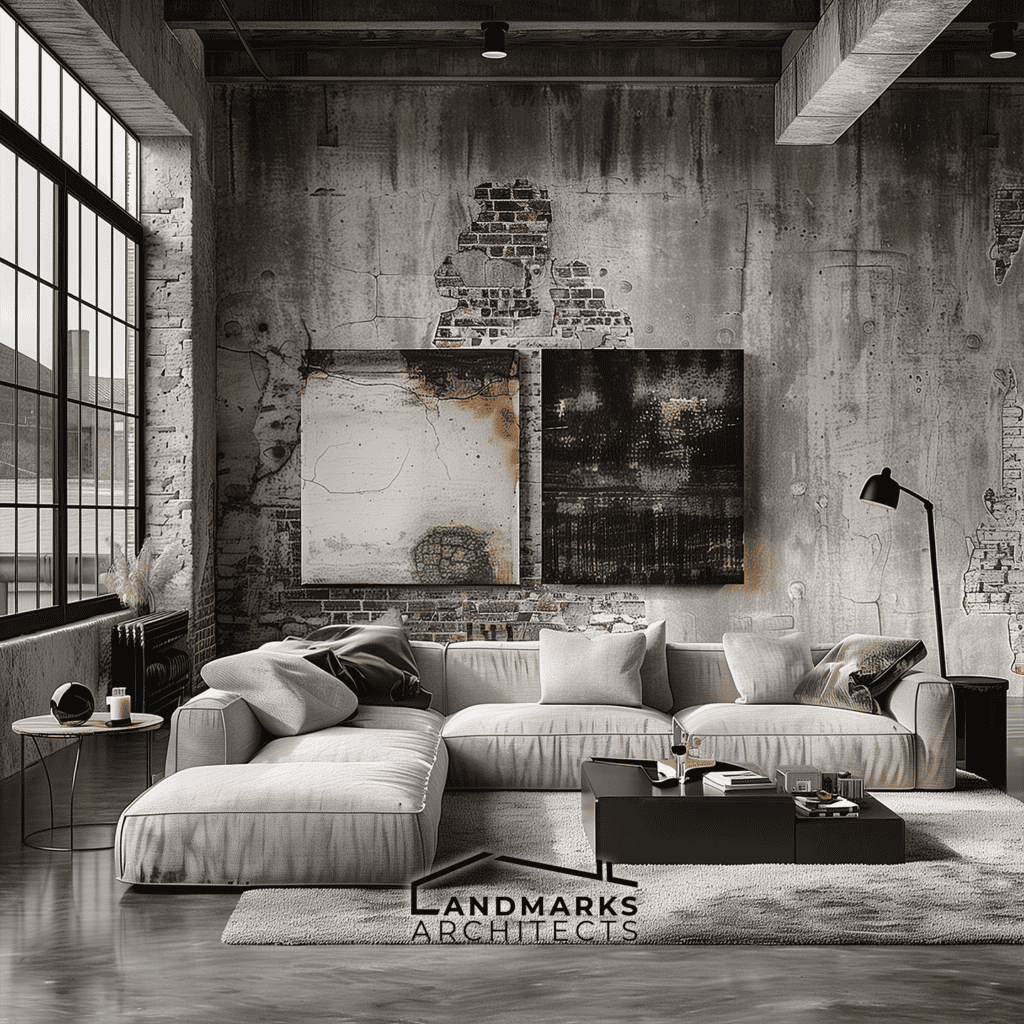
4. Exposed Structural Elements
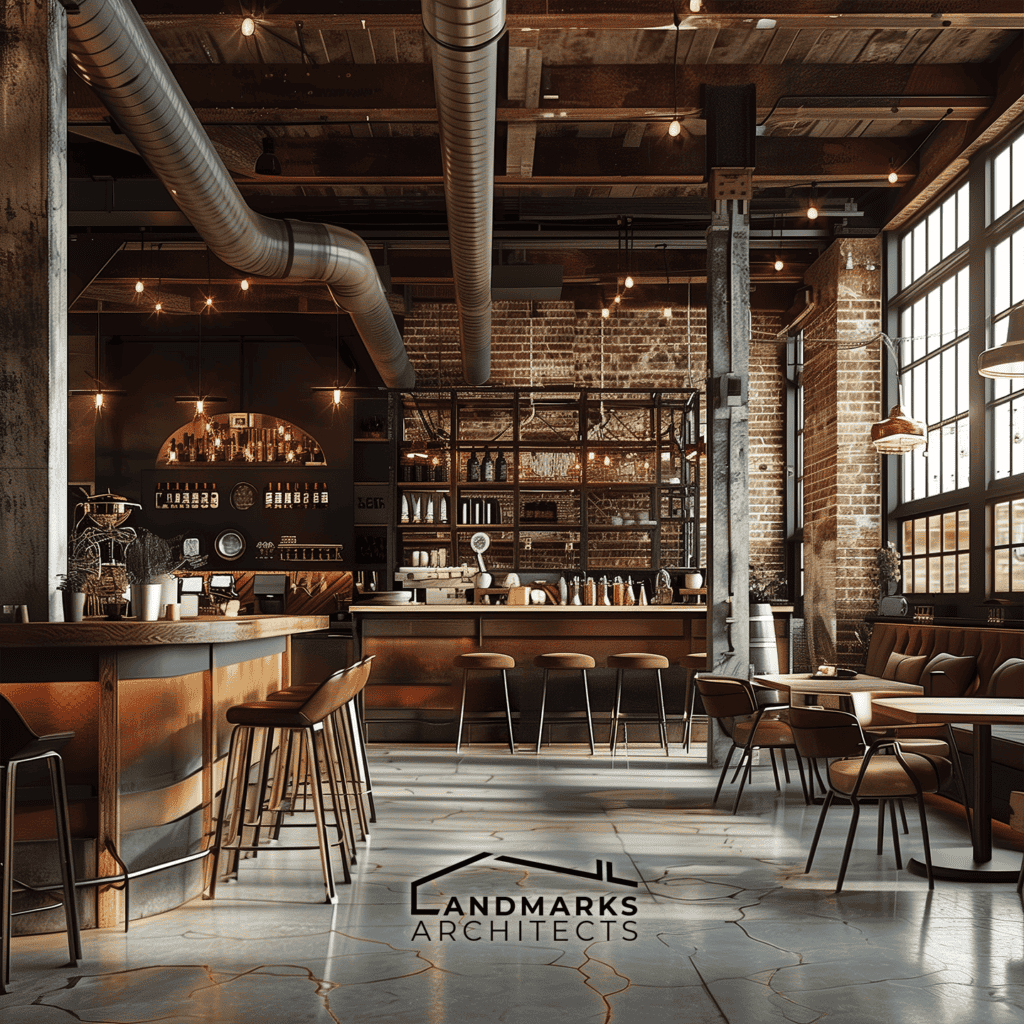
Exposed structural elements play a vital role in industrial interior design. They highlight the building’s authenticity and character. Beams, columns, and frameworks become design features, not hidden parts.
Architectural elements like steel trusses and ductwork can also be showcased. The mix of metal fixtures and natural materials creates a unique environment. It balances hard and soft textures.
5. Open Layouts and High Ceilings
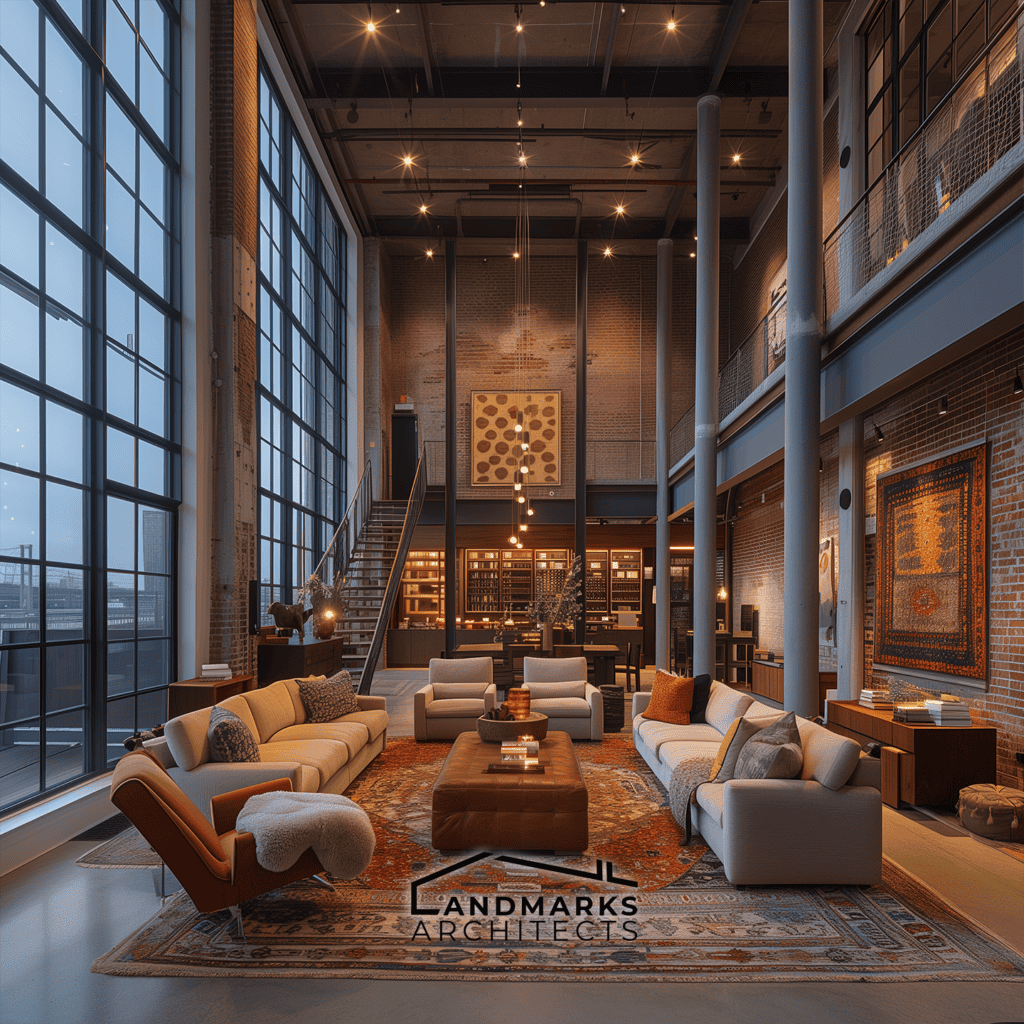
High ceilings enhance the sense of spaciousness. They allow natural light to flood the area, creating a warm and inviting environment. This feature is common in urban lofts and adaptive reuse projects. These transform old industrial buildings into modern homes.
The combination of expansive layouts and tall ceilings enables flexible furniture arrangement. Residents can utilize large, statement pieces without feeling cramped.
See also: 1970s Style in House Architecture: 10 Must-Know Features
6. Functional and Minimalist Furniture
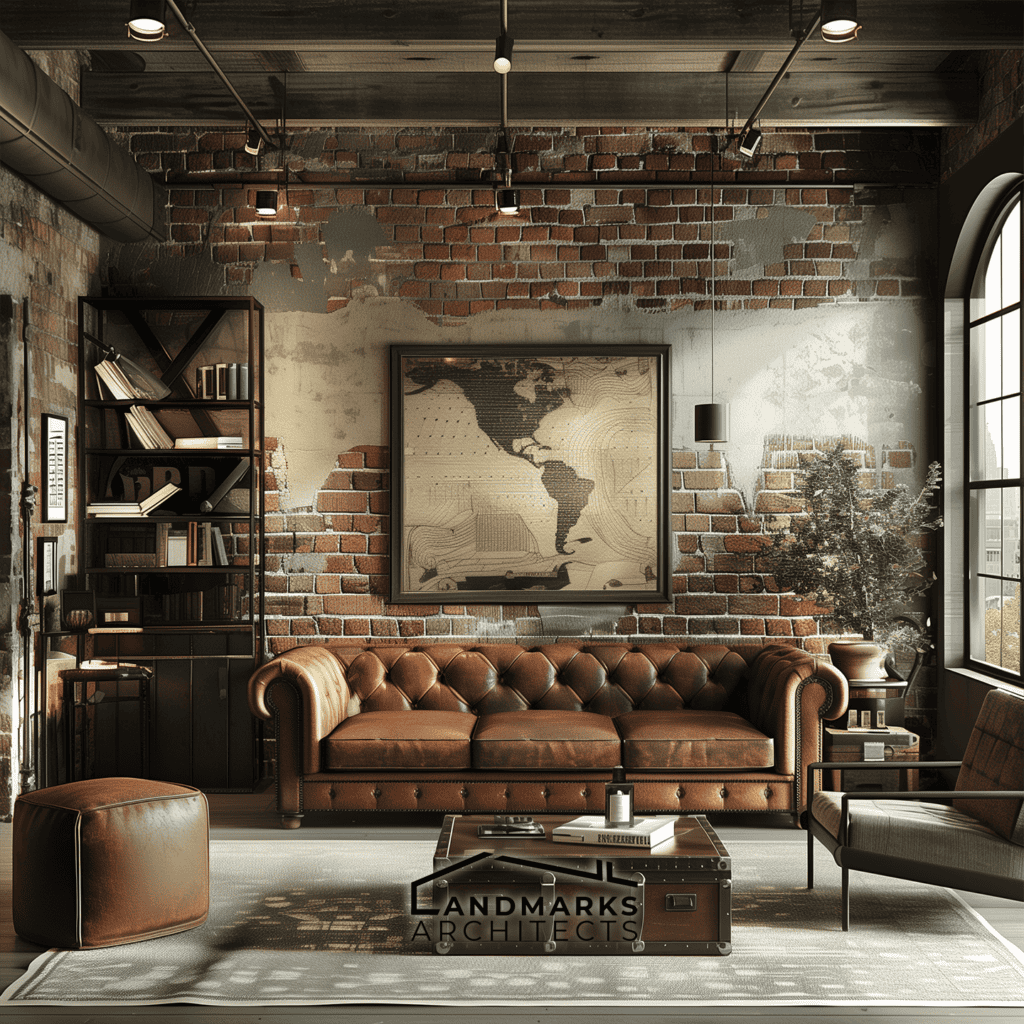
Functional and minimalist furniture defines the industrial interior design aesthetic. These furniture types add understated elegance. They allow personal expression without overwhelming the space.
Key Features:
- Durability: Made of metal and reclaimed wood, these pieces are sturdy. They resist wear and look good.
- Clean Lines: Straightforward designs reduce clutter and enhance openness in living spaces.
- Versatile Use: Many items work well in settings, from urban lofts to industrial homes.
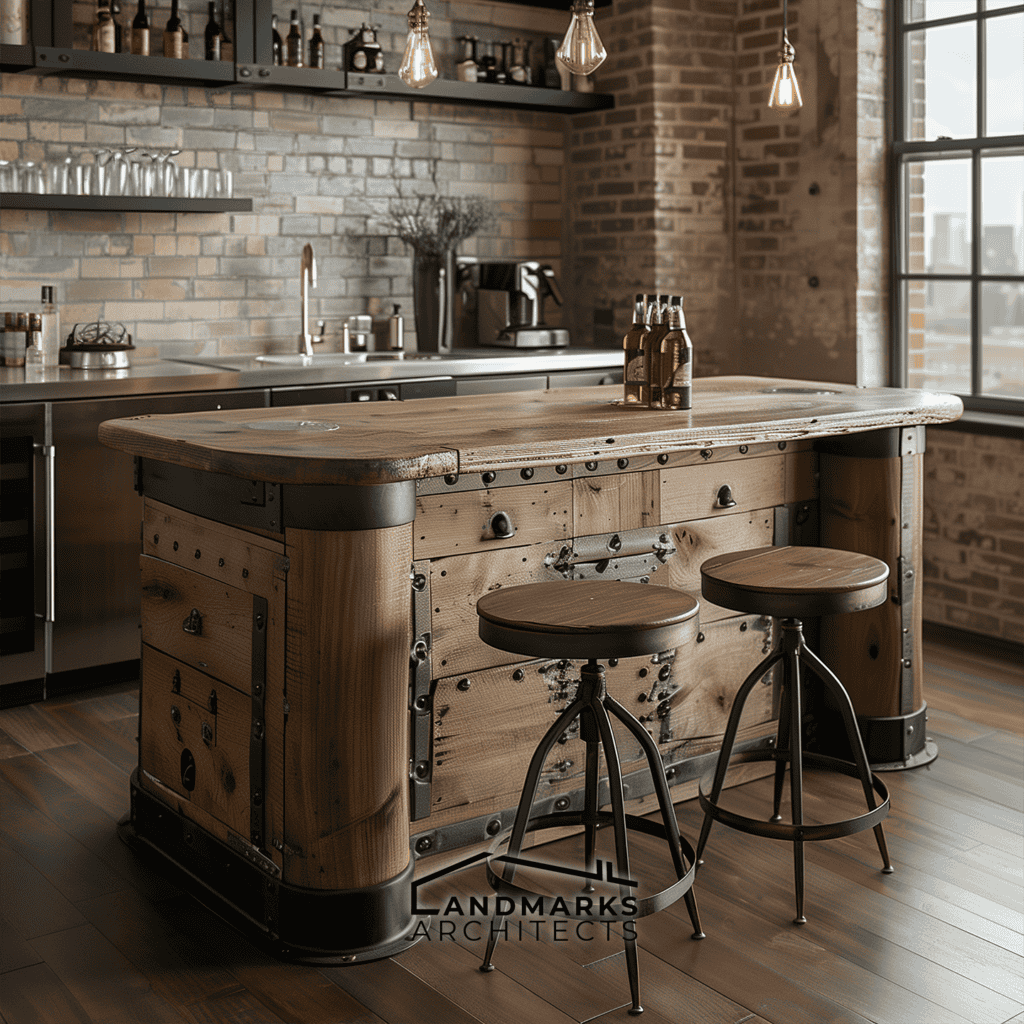
7. Vintage and Reclaimed Items
In industrial interior design, vintage architecture and reclaimed items are key. They create an authentic atmosphere. These elements contribute to a unique charm and personality that reflects history.
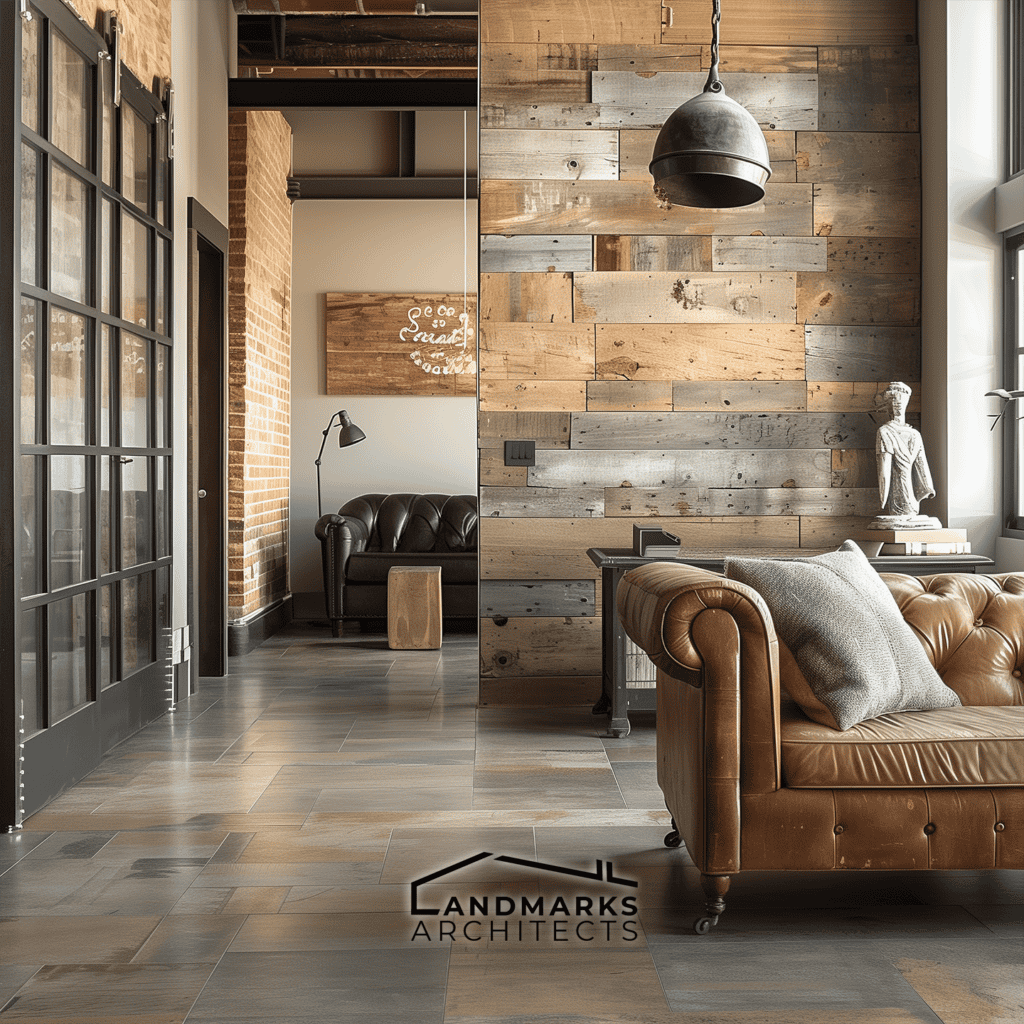
Reclaimed wood is used in many ways, like flooring, furniture, and accent walls. Its natural imperfections enhance the vibe of industrial spaces while adding warmth.
Incorporating reclaimed items helps to emphasize sustainability. It showcases a commitment to reusing materials instead of opting for new production.
8. Industrial Lighting

Industrial lighting is key to the look of any industrial-style space.
Key Features of Industrial Lighting:
- Pendant Lamps: These fixtures use metal and glass. They are a focal point and provide ample light.
- Edison Bulbs: Their warm glow adds a vintage touch. It enhances the industrial vibe and is practical.
- Floor Lamps: Tall, statement floor lamps are great for task lighting. They are both functional and decorative.

When selecting industrial lighting, consider the overall layout and use of space. A mix of ambient and task lighting can add depth and interest. It makes the space both stylish and practical.
9. Large Windows and Natural Light
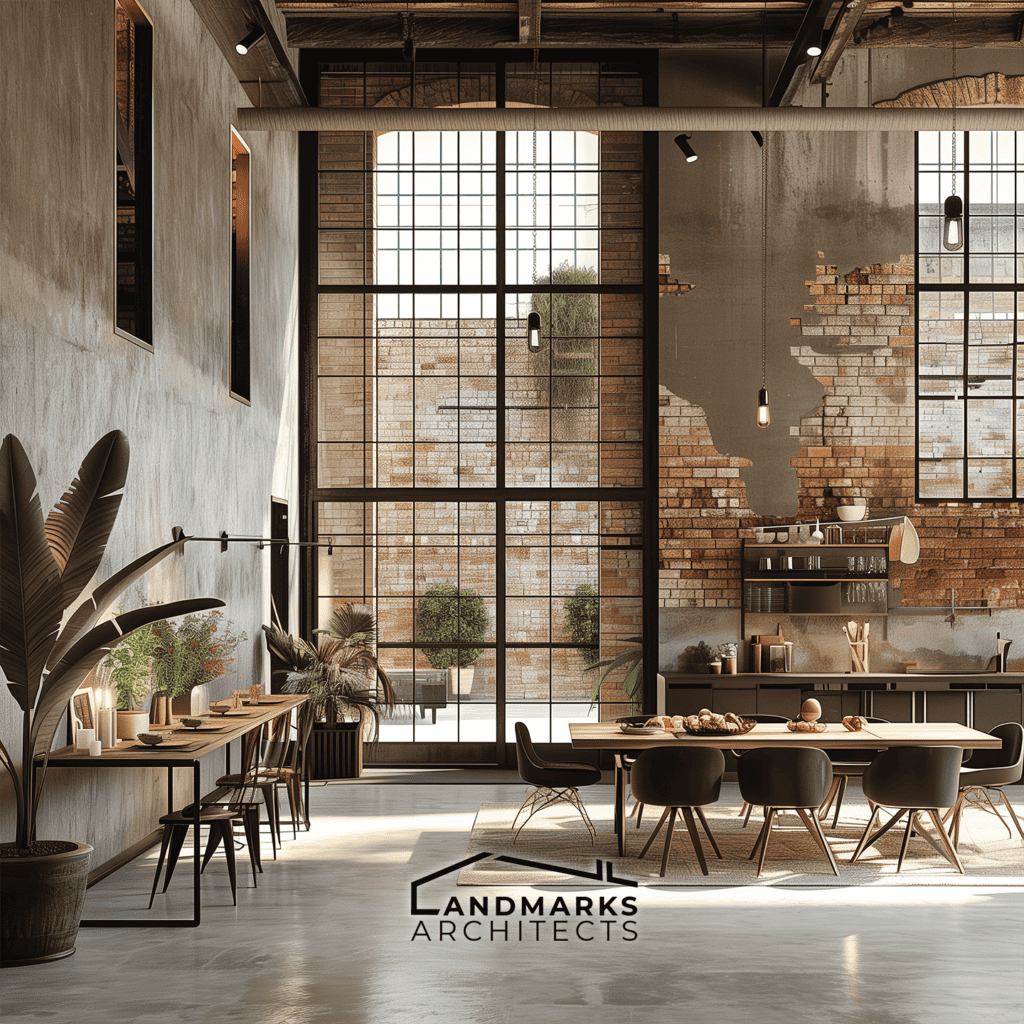
Large windows are essential in industrial interior design. They not only maximize natural light but also provide a connection to the outdoors. These windows are often minimalist, with black metal frames. They match the industrial style.
Natural light plays a critical role in creating a vibrant atmosphere. It emphasizes architectural details, such as exposed beams and brick walls. Also, Natural light enhances the richness of a neutral palette. As light shifts throughout the day, it interacts with the materials. This creates a living, evolving environment.
Mixing Industrial Style with Other Aesthetics

Modern Elements: Industrial designs often incorporate clean lines and a minimalist approach. By adding sleek furniture or bold artwork, the space can achieve a contemporary feel.
Scandinavian Touch: Adding Scandinavian elements introduces warmth and coziness. Light woods and soft textiles can balance the rawness of steel and concrete. They are industrial materials.
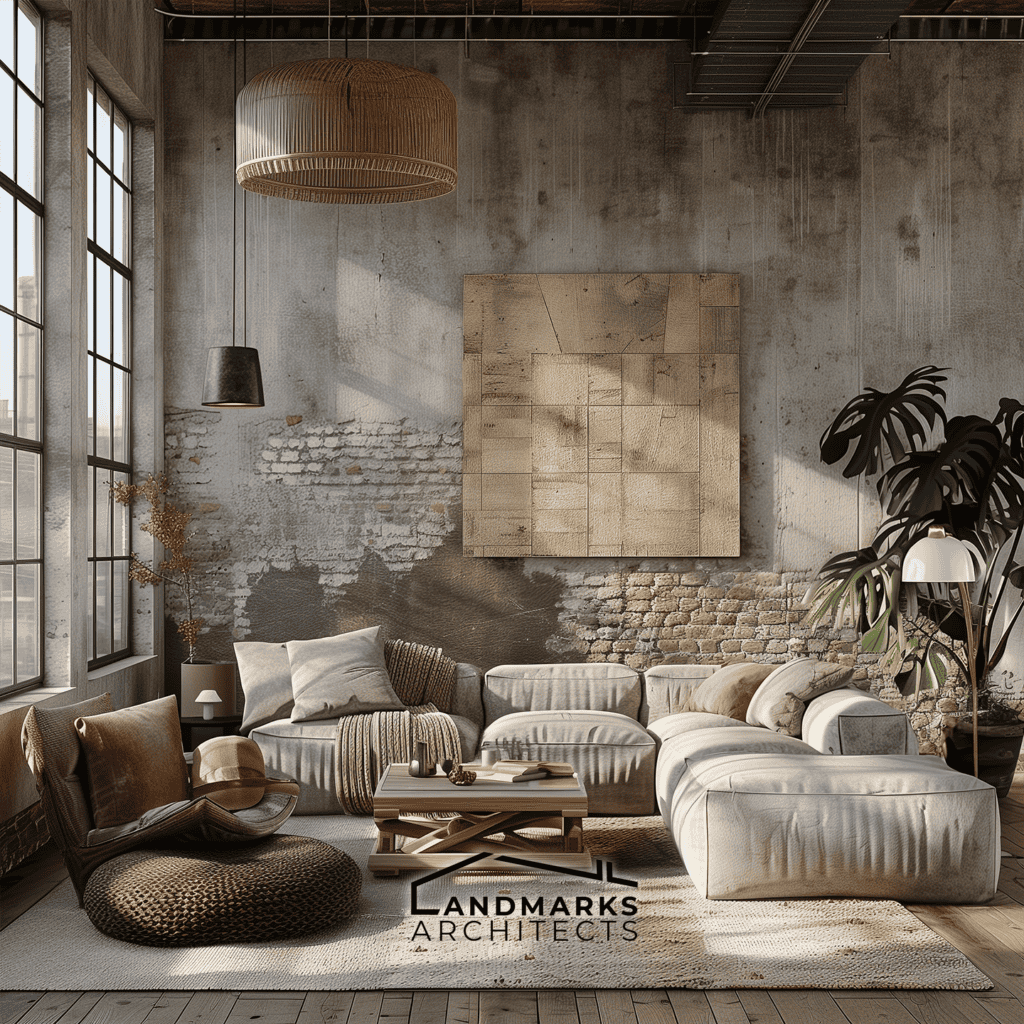
Rustic Influence: Rustic elements, like reclaimed wood and vintage accents, enhance the industrial look. This mix softens hard surfaces and introduces a touch of homeliness.
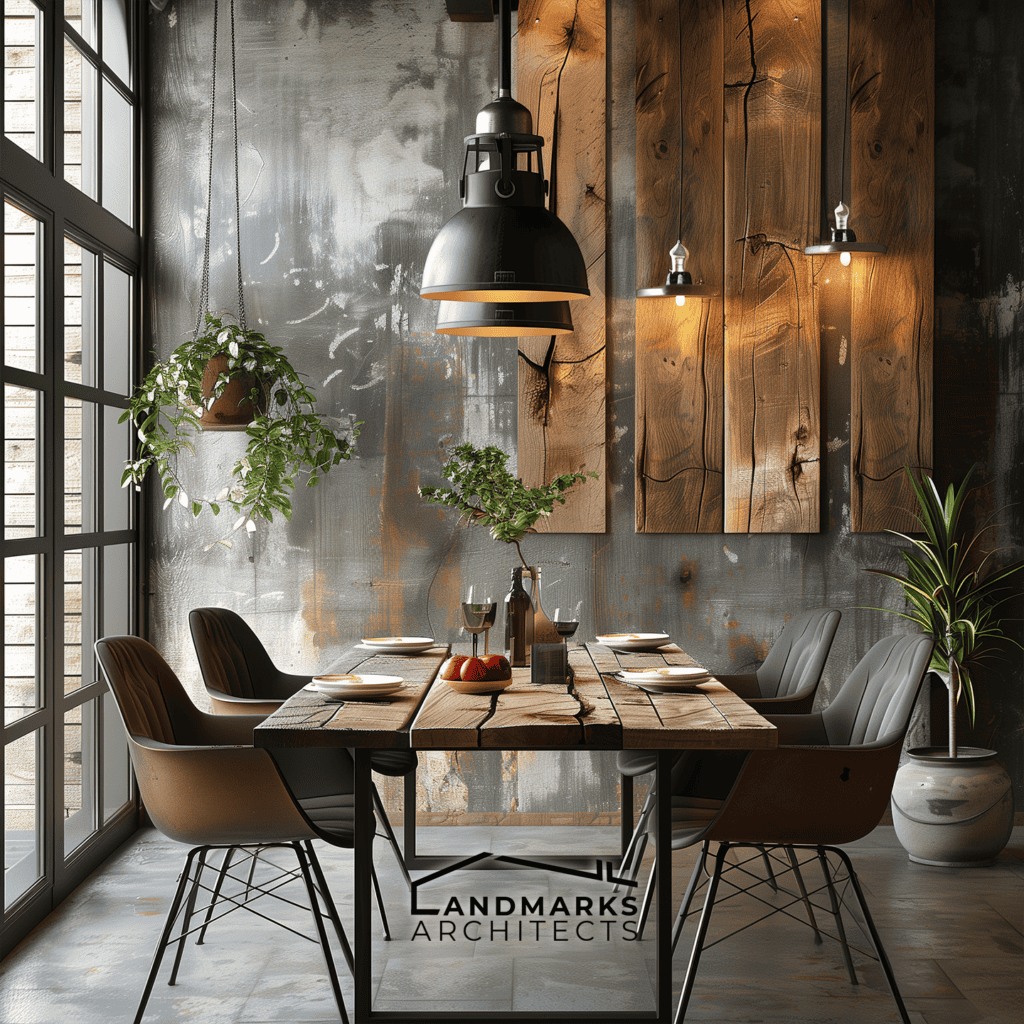
Mixing these styles doesn’t mean losing the industrial vibe. This blend creates unique, inviting spaces. They reflect individual tastes while preserving industrial design.
Overcoming the Challenges of Industrial Design
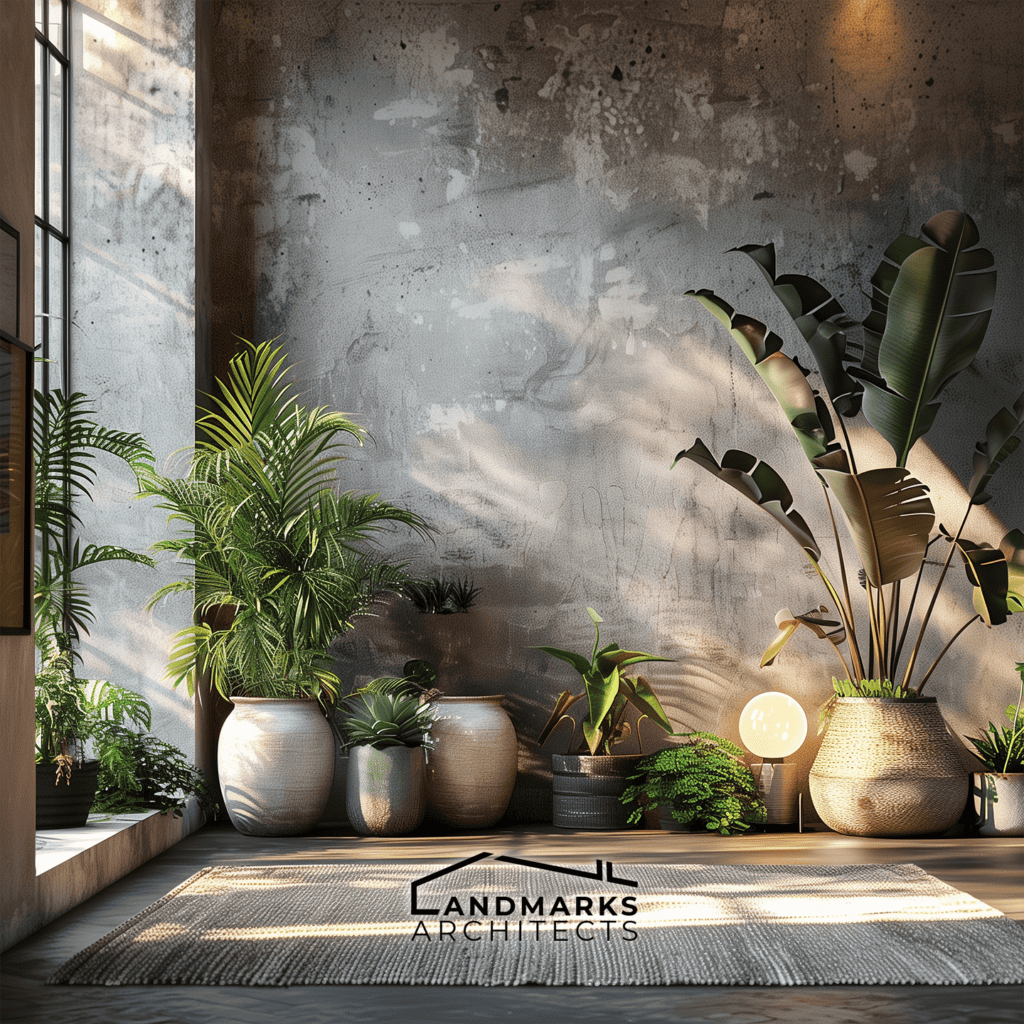
Industrial design presents unique challenges that require thoughtful solutions.
A common issue is the coldness of some industrial designs. To overcome this, integrating natural elements can create a more inviting atmosphere. Natural plants are effective in softening hard surfaces and adding color.
In addition to natural elements, balancing clean lines with comfort is key. Soft furnishings like sofas and cushions can complement the raw materials in industrial interiors.

Also, interior designers often recommend a neutral color palette. It unifies spaces while adding visual interest. Incorporating statement furniture can also enhance the overall design.
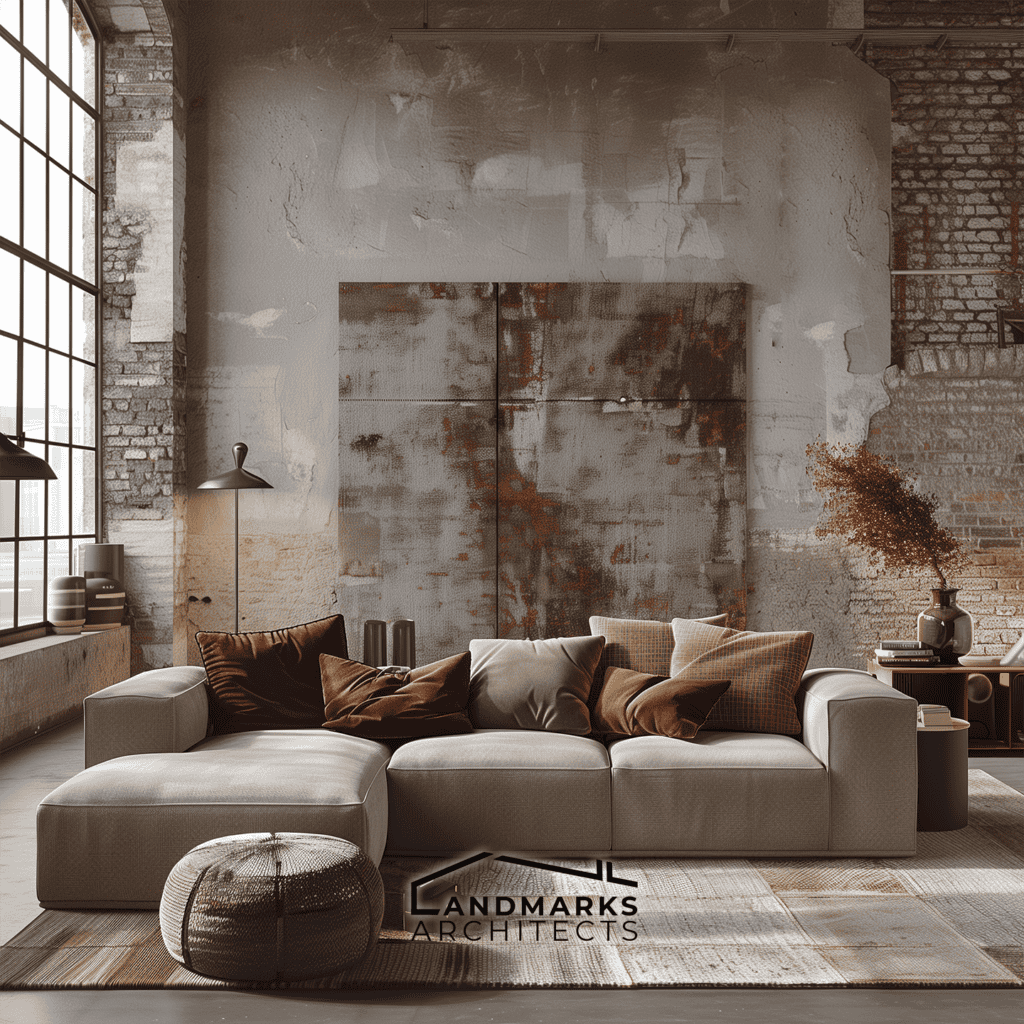
See also: Fantasy Architecture: 4 Key Elements You Must Know
Industrial Interior Design: A Recap
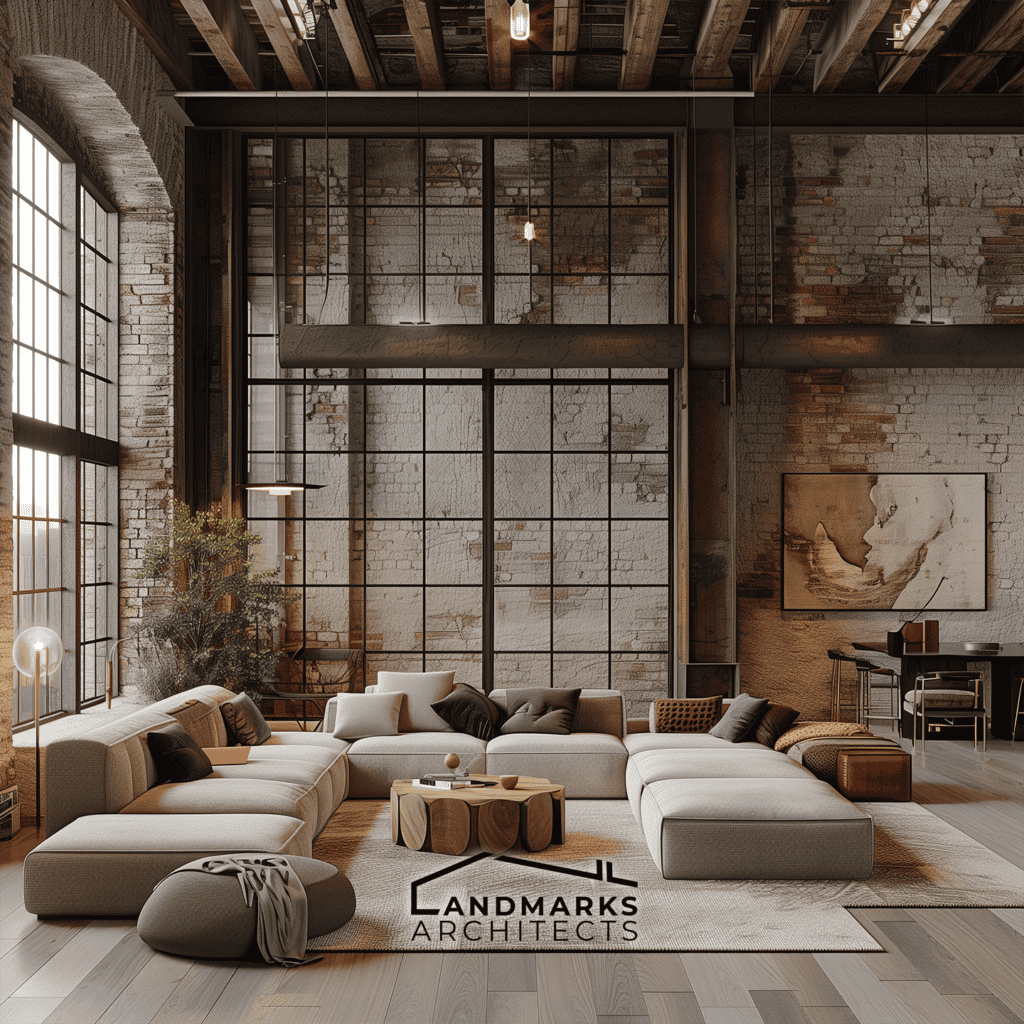
Industrial interior design is a distinct style. It blends natural materials with modern elements. Clean lines, neutral tones, and exposed beams and metal fixtures create striking, minimal spaces. Natural light and statement furniture add balance, harmonizing raw and refined aesthetics.
As trends shift, industrial design evolves. It reflects modern values and honors its rich history.










